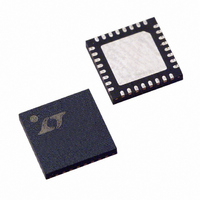LTC1628CUH Linear Technology, LTC1628CUH Datasheet - Page 14

LTC1628CUH
Manufacturer Part Number
LTC1628CUH
Description
IC SW REG STP-DN 2PHS 32QFN
Manufacturer
Linear Technology
Type
Step-Down (Buck)r
Datasheet
1.LTC1628CGPBF.pdf
(32 pages)
Specifications of LTC1628CUH
Internal Switch(s)
No
Synchronous Rectifier
Yes
Number Of Outputs
2
Voltage - Output
Adj to 0.8V
Current - Output
3A
Frequency - Switching
220kHz
Voltage - Input
3.5 ~ 30 V
Operating Temperature
0°C ~ 85°C
Mounting Type
Surface Mount
Package / Case
32-QFN
Lead Free Status / RoHS Status
Contains lead / RoHS non-compliant
Power - Output
-
Available stocks
Company
Part Number
Manufacturer
Quantity
Price
Company:
Part Number:
LTC1628CUH
Manufacturer:
Linear Technology
Quantity:
135
Company:
Part Number:
LTC1628CUH
Manufacturer:
LT
Quantity:
10 000
Part Number:
LTC1628CUH#PBF
Manufacturer:
LINEAR/凌特
Quantity:
20 000
APPLICATIO S I FOR ATIO
LTC1628/LTC1628-PG
is increased the gate charge losses will be higher, reducing
efficiency (see Efficiency Considerations). The maximum
switching frequency is approximately 310kHz.
Inductor Value Calculation
The operating frequency and inductor selection are inter-
related in that higher operating frequencies allow the use
of smaller inductor and capacitor values. So why would
anyone ever choose to operate at lower frequencies with
larger components? The answer is efficiency. A higher
frequency generally results in lower efficiency because of
MOSFET gate charge losses. In addition to this basic
trade-off, the effect of inductor value on ripple current and
low current operation must also be considered.
The inductor value has a direct effect on ripple current. The
inductor ripple current I
tance or frequency and increases with higher V
Accepting larger values of I
inductances, but results in higher output voltage ripple
and greater core losses. A reasonable starting point for
setting ripple current is I
maximum I
The inductor value also has secondary effects. The transi-
tion to Burst Mode operation begins when the average
inductor current required results in a peak current below
14
I
L
Figure 5. FREQSET Pin Voltage vs Frequency
( )( )
f L
2.5
2.0
1.5
1.0
0.5
1
0
120
L
occurs at the maximum input voltage.
V
OUT
OPERATING FREQUENCY (kHz)
U
170
1
–
U
L
V
V
OUT
decreases with higher induc-
L
220
IN
=0.3(I
L
allows the use of low
MAX
W
270
). Remember, the
1628 F05
320
U
IN
:
25% of the current limit determined by R
inductor values (higher I
lower load currents, which can cause a dip in efficiency in
the upper range of low current operation. In Burst Mode
operation, lower inductance values will cause the burst
frequency to decrease.
Inductor Core Selection
Once the value for L is known, the type of inductor must
be selected. High efficiency converters generally cannot
afford the core loss found in low cost powdered iron
cores, forcing the use of more expensive ferrite,
molypermalloy, or Kool M
independent of core size for a fixed inductor value, but it
is very dependent on inductance selected. As inductance
increases, core losses go down. Unfortunately, increased
inductance requires more turns of wire and therefore
copper losses will increase.
Ferrite designs have very low core loss and are preferred
at high switching frequencies, so design goals can con-
centrate on copper loss and preventing saturation. Ferrite
core material saturates “hard,” which means that induc-
tance collapses abruptly when the peak design current is
exceeded. This results in an abrupt increase in inductor
ripple current and consequent output voltage ripple. Do
not allow the core to saturate!
Molypermalloy (from Magnetics, Inc.) is a very good, low
loss core material for toroids, but it is more expensive than
ferrite. A reasonable compromise from the same manu-
facturer is Kool M . Toroids are very space efficient,
especially when you can use several layers of wire. Be-
cause they generally lack a bobbin, mounting is more
difficult. However, designs for surface mount are available
that do not increase the height significantly.
Power MOSFET and D1 Selection
Two external power MOSFETs must be selected for each
controller with the LTC1628: One N-channel MOSFET for
the top (main) switch, and one N-channel MOSFET for the
bottom (synchronous) switch.
The peak-to-peak drive levels are set by the INTV
voltage. This voltage is typically 5V during start-up (see
Kool M is a registered trademark of Magnetics, Inc.
L
) will cause this to occur at
®
cores. Actual core loss is
SENSE
. Lower
1628fb
CC














